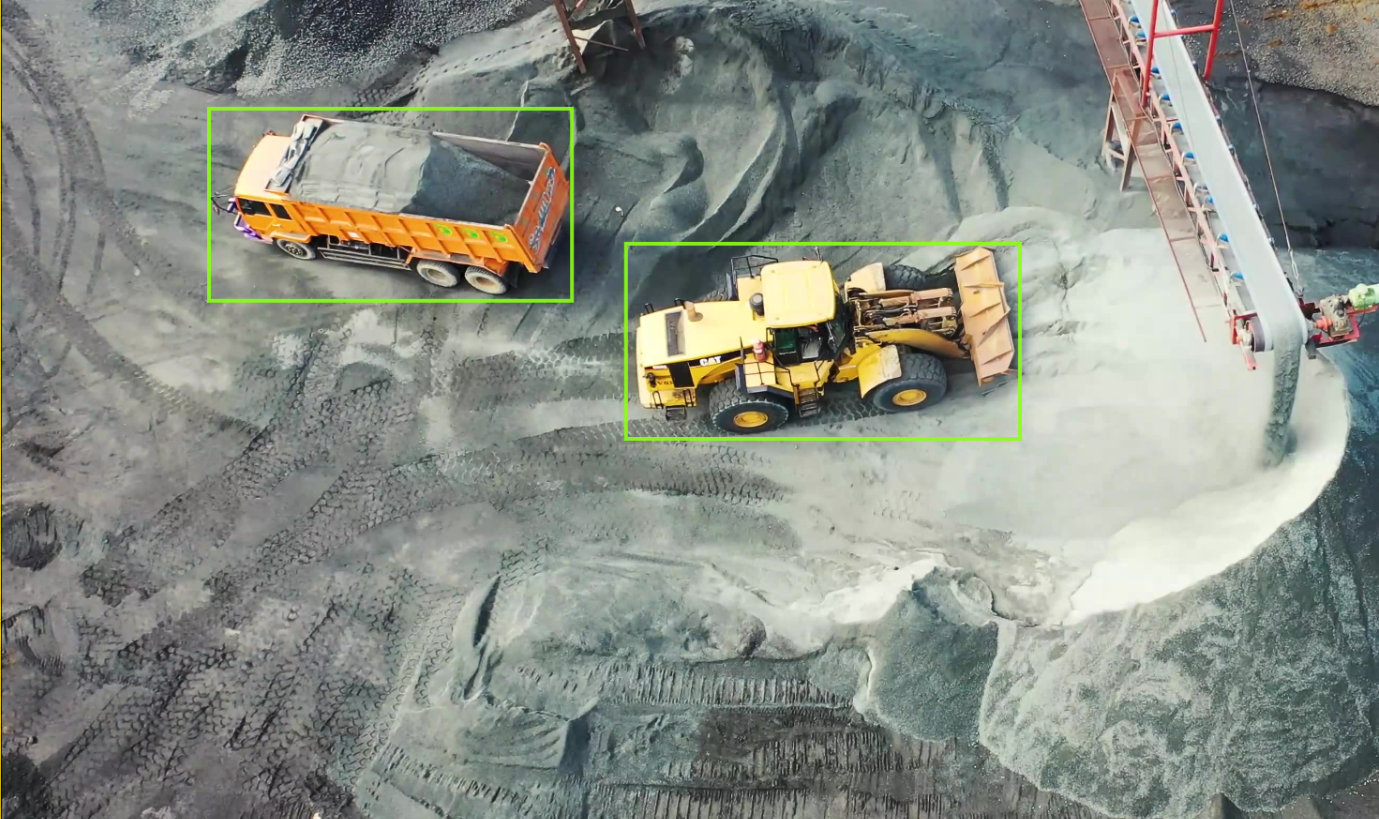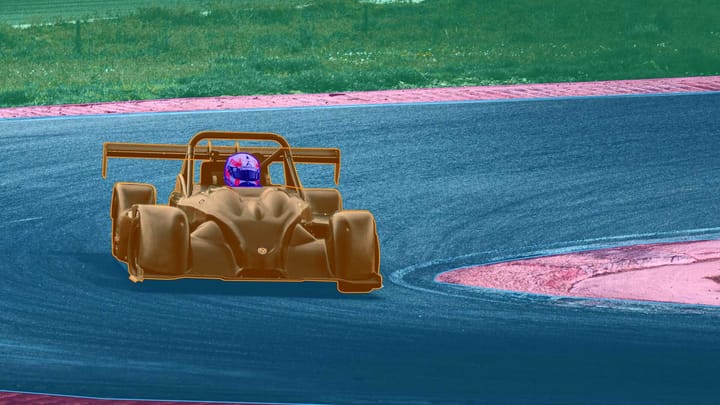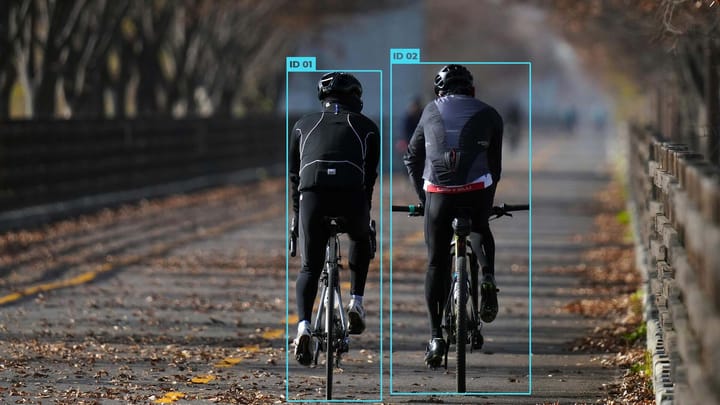Comparison: Tight Bounding Boxes vs. Loose Bounding Boxes

Image annotation is an essential process in computer vision, AI, and machine learning. It involves labeling objects within an image to facilitate image recognition. One of the critical components of image annotation is bounding boxes. Bounding boxes define the boundaries of objects within an image, making it easier for the computer to recognize objects. In this section, we will explore the differences between tight and loose bounding boxes and their significance in image recognition.
Tight bounding boxes refer to boxes that tightly surround the object of interest within an image. These boxes provide high precision in object delineation, making them suitable for applications that require high accuracy. Loose bounding boxes, on the other hand, provide more flexibility in accommodating varying object sizes. They surround the entire object, including any surrounding space, allowing for more adaptability in object recognition.
The choice between tight and loose bounding boxes depends on the specific application and the type of image being annotated. It is essential to choose the right bounding box to ensure accurate image recognition and data annotation.
Create an image of two rectangular boxes, one tightly fitting around an object and the other loosely fitting around the same object. The boxes should be the same color and placed side by side. The tightly fitting box should show the exact contours of the object with no excess space, while the loosely fitting box should have ample empty space around the object. The lines of both boxes should be smooth and sharp, with no visible pixelation or jagged edges. In the background, there should be a gradient color transition from dark to light.
Key Takeaways
- Image annotation involves labeling objects within an image for image recognition.
- Bounding boxes define the boundaries of objects within an image, facilitating accurate object recognition.
- Tight bounding boxes provide high precision in object delineation, while loose bounding boxes offer more flexibility in accommodating varying object sizes.
- The choice of bounding box depends on the specific application and the type of image being annotated.
- Choosing the right bounding box is crucial for accurate image recognition and data annotation.
Understanding Image Annotation
Image annotation is the process of labeling and identifying objects within digital images. This plays a crucial role in fields such as computer vision, artificial intelligence (AI), and machine learning, where properly annotated images serve as training data for algorithms to better recognize objects and patterns.
There are several techniques for image annotation, including image labeling, object annotation, and image tagging. Image labeling involves placing text on an image to describe its content, while object annotation involves drawing bounding boxes around objects of interest. Image tagging, on the other hand, involves attaching labels to images for easy retrieval and categorization.
Each technique has its advantages and disadvantages, but all serve the common goal of making images more understandable to machines through a human-defined language.
The Role of Image Annotation
Image annotation is a critical step in enabling machines to understand and interpret the visual world. It has numerous practical applications, including facial recognition, visual search, and autonomous vehicles.

For example, annotated images of faces can be used to train facial recognition systems, allowing them to accurately identify individuals. Similarly, annotated images of cars and pedestrians can help autonomous vehicles navigate and avoid obstacles.
Object Annotation
Object annotation is one of the most common techniques for image annotation. It involves drawing bounding boxes around objects of interest in an image to define their location and size.
The use of bounding boxes in object annotation provides a clear and standardized method for identifying and localizing objects in images. Bounding boxes also facilitate machine learning by providing a consistent format for training data.
Image Labeling
Image labeling is another technique for image annotation that involves placing text on an image to describe its content. This is often used in conjunction with bounding boxes to provide additional context to objects within an image.
Image labeling is particularly useful for images with complex or ambiguous objects that may be difficult to identify with bounding boxes alone. It can also be used to differentiate between similar objects within an image.
Image Tagging
Image tagging involves attaching labels to images for easy retrieval and categorization. This can be useful when organizing large collections of images or conducting visual search.
Image tagging can also be used to provide additional context to images, such as location or time information. For example, a photo of a landmark could be tagged with its name, location, and the date it was taken.
“Image annotation is the foundation of visual AI, enabling machines to recognize and classify objects within digital images.”
The Significance of Bounding Boxes
In image annotation, bounding boxes play a crucial role in accurately defining the boundaries of objects within an image. These shapes represent the smallest rectangular containers that surround objects, serving as a reference point for image recognition algorithms.
Bounding boxes are essential for image annotation because they enable annotation teams to accurately label and categorize objects within an image. Without them, object recognition could be inaccurate or non-existent, leading to flawed analysis and poor results.
Bounding boxes also allow for the training of machine learning models, which rely heavily on annotated images with bounding boxes. These models use the data provided to learn how to recognize and classify objects within images, resulting in more accurate and efficient image recognition.
There are various methods for defining bounding boxes, including tight and loose bounding boxes. Choosing the right type is essential for enhancing image recognition and data annotation accuracy.
Defining Bounding Boxes
Bounding boxes are defined by a set of coordinates that represent the top-left corner of the shape, as well as its width and height. This information is used to encapsulate an object within an image, so that machine learning algorithms can identify and analyze it accurately.
While bounding boxes may seem simple in theory, there are numerous factors to consider when defining the shapes, including object size, shape, and location within an image. These factors can impact the accuracy of image recognition and data annotation, making it crucial to choose the right type of bounding box.
Tight Bounding Boxes: Precision over Flexibility
When it comes to image annotation, choosing the right bounding box is critical for achieving accurate image recognition and data annotation. Tight bounding boxes offer precise object delineation, making them the preferred choice for many applications.
By tightly fitting around the object, tight bounding boxes provide detailed information on its shape and size, facilitating efficient data processing and improved annotation quality.
In this image, a tight bounding box is used to indicate the precise boundaries of the car. This level of accuracy is crucial for image recognition algorithms to correctly identify and classify objects, improving the overall performance of the system.

Additionally, tight bounding boxes are particularly useful for datasets with consistent object sizes, allowing for streamlined annotation processes and increased efficiency in data processing.
Overall, while tight bounding boxes may not provide the same level of flexibility as loose bounding boxes, they offer unparalleled precision in image annotation and data labeling, making them the ideal choice for many computer vision applications.
Loose Bounding Boxes: Flexibility for Varying Object Sizes
When it comes to image annotation, loose bounding boxes offer a unique advantage over tight bounding boxes. Unlike their counterparts, loose bounding boxes provide flexibility in accommodating varying object sizes, making them suitable for complex images and inconsistencies in object dimensions.
Loose bounding boxes are particularly useful in computer vision, where they allow for accurate object recognition in images with complex backgrounds or where objects may be partially obscured. They also enable image recognition models to recognize objects of different sizes, improving overall accuracy.
Create an image showcasing the flexibility of loose bounding boxes by illustrating objects of varying sizes comfortably contained within their respective boxes. Use muted colors to highlight the utility of these boxes without distracting from the simplicity of the scene. Add a touch of texture to the boxes for added visual interest.
While loose bounding boxes may not offer the same level of precision as tight bounding boxes, they provide greater flexibility in accommodating a wider range of images. This makes them a valuable tool in image annotation and recognition.
Comparison of Tight and Loose Bounding Boxes
When it comes to image annotation, choosing the right bounding box is crucial for accurate image recognition. Tight and loose bounding boxes are the two main types of bounding boxes used in image annotation, each with its own advantages and disadvantages. Let's take a closer look at how these two types of bounding boxes compare in terms of accuracy, adaptability, and efficiency.
| Tight Bounding Boxes | Loose Bounding Boxes | |
|---|---|---|
| Definition | A bounding box tightly encloses the object, leaving little to no space between the object and the edges of the box. | A bounding box loosely encloses the object, allowing for more space between the object and the edges of the box. |
| Accuracy | Tight bounding boxes provide precise object delineation, resulting in better accuracy in image recognition and data annotation. However, they can be less effective when dealing with objects with irregular shapes or sizes. | Loose bounding boxes are more flexible in accommodating varying object sizes and shapes, making them ideal for complex images. However, they may not provide as much precision in object delineation as tight bounding boxes. |
| Adaptability | Tight bounding boxes may not be as adaptable to varying object sizes or shapes, making them less suitable for images with significant variations in object dimensions. | Loose bounding boxes are more adaptable to images with varying object sizes and shapes, making them better suited to handle inconsistencies in object dimensions. |
| Efficiency | Tight bounding boxes require more time and effort to mark up an image, as they must be placed precisely around the object. However, they can be more efficient when it comes to training machine learning models, as they provide highly accurate annotations. | Loose bounding boxes are easier and faster to mark up, as they do not require as much precision. However, they may not provide as much accuracy as tight bounding boxes during the machine learning training phase. |
Create an image that shows the difference between a tight bounding box and a loose bounding box. Use contrasting colors to highlight the boundaries. For the tight bounding box, make it fit snugly around the object while for the loose bounding box, make it noticeably larger than the object with ample space around it. The image should be simple yet visually striking, and should clearly demonstrate the advantages and disadvantages of each type of bounding box.
Ultimately, the choice between tight and loose bounding boxes depends on the requirements of the specific image annotation and recognition project. Tight bounding boxes may be more suitable for projects that prioritize precision over flexibility, such as those dealing with objects with regular shapes and sizes. On the other hand, loose bounding boxes may be more suitable for complex images with varying object dimensions that require greater adaptability.
Understanding the strengths and weaknesses of tight and loose bounding boxes can help image annotation professionals make informed decisions about which type of bounding box to use for a particular project. This knowledge can lead to better accuracy, adaptability, and overall efficiency in image recognition and data annotation.
The Role of Bounding Boxes in Machine Learning
Machine learning algorithms rely heavily on labeled data for effective training. In image recognition, bounding boxes serve as essential labels that define the objects within an image and facilitate efficient machine learning.
By annotating images with bounding boxes, developers can create labeled datasets that provide clear examples of objects' sizes, shapes, and boundaries. This labeled data is then used to train machine learning models and foster better image recognition.
Bounding boxes allow developers to create robust and generalizable models that can accurately recognize objects in various contexts. With bounding boxes, machine learning algorithms can learn to recognize objects, even when they are obscured by other objects or have different orientations and positions.

For instance, a machine learning model trained on annotated images with bounding boxes can accurately detect and classify a car, whether it appears in a full image or only partially visible. Furthermore, bounding boxes can identify unique characteristics of objects, such as the color, texture, and shape, enhancing the model's accuracy in recognizing them.
Why Bounding Boxes are Essential in Machine Learning
Bounding boxes play a crucial role in machine learning algorithms by defining the objects' boundaries and making them recognizable to the model. Without bounding boxes, machine learning models would struggle to differentiate objects from their background or identify the unique qualities of objects being recognized.
Moreover, machine learning models require consistent and accurate labeling of data to learn and perform effectively. Bounding boxes offer this consistency by allowing developers to define specific regions in an image and label them precisely, ensuring accurate recognition.
Challenges in Image Annotation and Machine Learning
Despite the importance of image annotation in machine learning, there are challenges in creating high-quality labeled data sets. One of the primary challenges is the task's complexity and time required to create accurate bounding boxes.
Creating precise bounding boxes requires considerable effort and time, primarily when working with complex images and objects with unclear boundaries. Furthermore, machine learning models require vast amounts of labeled data for training, making it imperative to create precise bounding boxes on a large scale.
Another challenge is maintaining consistency throughout the labeling process. Manual labeling is prone to inconsistencies and errors, which can compromise the quality of the labeled dataset. Additionally, different annotators may have different interpretations of objects and regions, leading to discrepancies in the labeled data.
Improving Image Annotation with Advanced Techniques
While bounding boxes are a fundamental technique in image annotation, there are other advanced methods that can further enhance image recognition and data annotation processes. These include computer vision and artificial intelligence (AI).
Computer vision involves developing algorithms that can analyze and interpret visual data from the world around us. This approach goes beyond basic image annotation by incorporating machine learning and deep learning techniques to recognize patterns and make accurate predictions based on highly complex data sets. With this technique, it's possible to identify objects within images without the need for manual annotation.
AI also has significant potential in image annotation. Advanced neural networks and machine learning algorithms can learn to recognize patterns and detect objects in images with extreme accuracy. By combining image annotation with AI, it's possible to build highly sophisticated image recognition systems that can identify, classify, and even interpret objects within images.
However, these advanced techniques can require significant expertise and resources to implement effectively. They may also require large amounts of training data to improve accuracy and reliability. Nevertheless, they represent a promising area of research for improving image annotation and recognition in the future.
“With computer vision and AI, it's possible to build highly sophisticated image recognition systems that can identify, classify, and even interpret objects within images.”
Conclusion
In conclusion, image annotation plays a pivotal role in several fields that require accurate image recognition. Bounding boxes form an integral part of the image annotation process, as they provide a framework for object delineation in an image. Choosing the right bounding box amongst tight bounding boxes and loose bounding boxes is crucial to achieve enhanced image recognition.
Throughout the article, we explored the intricacies of image annotation, its techniques, and the significance of bounding boxes in this process. We discussed the advantages of tight bounding boxes, which provide precise object delineation and lead to improved accuracy in image recognition and data annotation. We also explored the benefits of loose bounding boxes, which provide flexibility for varying object sizes and make them suitable for complex images and inconsistencies in object dimensions.
Future Potential
Image annotation technology has immense potential in the fields of computer vision, AI, and machine learning. Annotated images with bounding boxes serve as training data for machine learning models, fostering better image recognition. Beyond bounding boxes, advanced techniques such as computer vision and AI can further enhance image recognition and data annotation processes.
At present, image annotation with bounding boxes remains the most popular method of image annotation. However, as technology advances and new techniques emerge, we can expect the image annotation process to become more efficient and accurate.
Final Thoughts
Image annotation with bounding boxes is a crucial element of image recognition. By carefully choosing the right bounding box, we can facilitate accurate image recognition. As technology advances and new techniques emerge, we can expect image annotation to become even more efficient and accurate, making it an indispensable tool in the fields of computer vision, AI, and machine learning.
FAQ
What is image annotation?
Image annotation is the process of labeling or tagging images with metadata to provide additional information about the objects or elements within the image. This metadata helps in training computer vision and machine learning models for various applications.
What are tight bounding boxes?
Tight bounding boxes refer to annotations that closely enclose the object or element of interest within an image, leaving minimal empty space around the object. They provide precise boundaries and are suitable for accurate object recognition.
What are loose bounding boxes?
Loose bounding boxes are annotations that encompass the object or element of interest with some extra space around it. They offer flexibility to accommodate varying object sizes and can be useful for complex images with objects of different dimensions.
How do bounding boxes enhance image recognition?
Bounding boxes define the spatial boundaries of objects within an image, enabling computer vision algorithms to focus on specific regions of interest for analysis and recognition. They provide crucial information for accurate object detection and classification.
What are the advantages of tight bounding boxes?
Tight bounding boxes offer precise object delineation, leading to improved accuracy in image recognition and data annotation. They are especially beneficial when the focus is on achieving high precision in object detection and classification tasks.
When are loose bounding boxes more suitable?
Loose bounding boxes are more suitable when dealing with images that contain objects of varying sizes or irregular shapes. Their flexibility allows for the inclusion of extra space around objects, accommodating variations in object dimensions.
What is the difference between tight and loose bounding boxes?
Tight bounding boxes provide precise object boundaries and are suited for achieving high accuracy in object recognition. Loose bounding boxes offer flexibility and can accommodate varying object sizes, making them suitable for complex images.
How do bounding boxes contribute to machine learning?
Annotated images with bounding boxes serve as training data for machine learning models. The bounding box annotations provide the necessary information for the models to learn and recognize objects, improving image classification and object detection capabilities.
Are bounding boxes the only technique used in image annotation?
No, image annotation encompasses various techniques beyond bounding boxes. Other techniques include image labeling, object annotation, image tagging, and more. These techniques help provide contextual information and enhance the understanding of images for AI and machine learning algorithms.



Comments ()